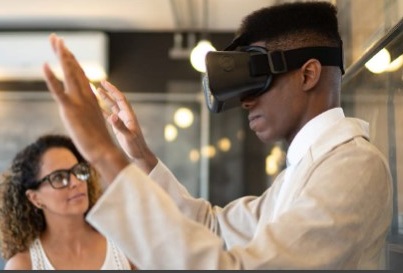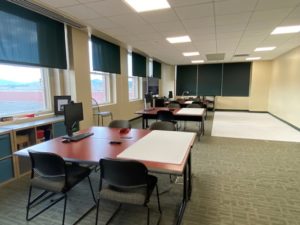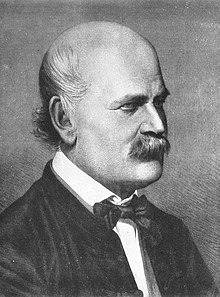Welcome to WordPress. This is your first post. Edit or delete it, then start writing!
Getting Started with Hubs
From Hubs by Mozilla
Hubs Controls – Navigation

XR for Educators
Are you an educator curious about using innovative technology to meet educational goals? Want to bring more interaction into the online learning space?
Extended Reality (XR) is an umbrella term used to describe immersive technologies that can merge the physical and virtual worlds. It is used in education and training to enhance student learning and engagement in classroom and at home, as well as to increase knowledge retention for students.
Denis Gracanin, Associate Professor of Computer Science from Virginia Tech, explains how XR technology works and the hardware and software needed to bring it into the classroom.
XR for Educators is designed as a 4-session online workshop: 3 class sessions and 1 Saturday morning STEM+ lab dedicated to demonstrations and discussions. For November, the schedule has been adjusted to better accommodate teaching schedules:
- FIRST SESSION FREE
A recording of Session 1, What is XR?, is available for asynchronous viewing. Registration is not required to access the recordings.
Topics: XR Basics, XR & Education, XR Examples, XR & Gaming. - FLEXIBILITY
Session 2 and Session 4 live online sessions will be offered twice – once at 4-5pm and repeated again at 7-8pm. Attendees may attend either or both sessions. Recordings of the live sessions will be posted on the Canvas site the day after the session. - ACCESSIBILITY
Internet access is required to attend the workshop, however, you do not need special XR equipment to participate in the workshop. Attendees will meet for live sessions in ZOOM and access the workshop’s demo XR space online from their computers.
Instructor
Dr. Denis Gracanin is an Associate Professor of Computer Science and a Faculty Affiliate at Institute for Creativity, Arts, and Technology, Virginia Tech. His research interests are at the intersection of Human Computer Interaction and Internet of Things, including eXtended Reality, Smart Built Environments and distance collaboration/education.
STEM+ by CLS
STEM+ by Commonwealth Learning Systems (CLS) develops online STEM education focusing on emerging technologies and job skills. Our goal is to support learners and educators in innovative, accessible ways – online, hybrid, and in-person at our STEM+ lab at the Roanoke Higher Education Center.
What is XR?
Registration Not Required to access this recording
$35
Includes live online sessions and access to workshop’s Canvas site for one month following the workshop.
*Weekday sessions
repeated at 7pm to
accommodate educator schedules
Session 1: What is XR?
Watch online at your convenience before first live session.
Session 2: XR Technology: Hardware, Software & Online Services
Wednesday,
November 11, 2020
4-5 pm or 7-8pm*
Session 3: STEM+ Lab Demonstrations & Discussions
Saturday,
November 14, 2020
10am – 12pm
Session 4: XR for Education & Training
Wednesday,
November 18, 2020
4-5 pm or 7-8pm*




The idea of washing hands to prevent the spread of disease is not a new one. You might be surprised to learn that the idea was developed in 1847 by Ignaz Philipp Semmelweis, a Hungarian doctor and scientist, who discovered a link between disease and washing hands before the idea of germs and microorganisms were understood.
Semmelweis discovered that having physicians wash their hands reduced the maternal morality rate of women after childbirth. He compared the death rates caused by puerperal fever at two different clinics. He discovered that the rate was higher at the clinic where medical students were doing autopsies before seeing patients. He theorized that something from the corpses was infecting the patients seen by the medical students who had conducted autopsies.
At that time, germs were not understood or even recognized as a cause of disease. Semmelweis had no idea what a germ was, but he discovered that getting doctors to wash their hands after autopsies reduced the spread of puerperal fever and the overall morality rate. He was able to bring down the mortality rate of the clinic with the highest death rates by 90%, and bring down the overall death rate in both clinics from 10% to 1% or less by implementing hand washing procedures.
Unfortunately, Semmelweis findings were rejected by the medical community because they said that he did not have a scientific explanation for why hand washing made a difference. Semmelweis had the data to show washing hands worked, but without a valid theory explaining germs and how they spread disease, his discovery was dismissed.
Semmelweis died a tragic death. In 1865, two weeks after being committed to a psychiatric hospital by his peers, he died from an infected wound from a struggle with hospital guards.
It was not until after Semmelweis’ death and the acceptance of Louis Pasteur’s work with germ theory, that the practice of washing hands was accepted by the medical community. Louis Pasteur discovered that microorganisms cause disease and fermentation. He developed some of the first vaccines, and what we know as the pasteurization process. Pasteur patented the pasteurization process in 1865. The same year that Semmelweis died.
Center for Disease Control’s When and How to Wash Your Hands
The Center for Disease Control and Prevention (CDC) emphasizes “During the Coronavirus Disease (COVID-19) pandemic, keeping hands clean is especially important to help prevent the virus from spreading.”
CDC’s Key Times to Wash Hands
https://www.cdc.gov/handwashing/when-how-handwashing.html
- Before, during, and after preparing food
- Before eating food
- Before and after caring for someone at home who is sick with vomiting or diarrhea
- Before and after treating a cut or wound
- After using the toilet
- After changing diapers or cleaning up a child who has used the toilet
- After blowing your nose, coughing, or sneezing
- After touching an animal, animal feed, or animal waste
- After handling pet food or pet treats
- After touching garbage
During the COVID-19 pandemic, you should also clean hands:
- After you have been in a public place and touched an item or surface that may be frequently touched by other people, such as door handles, tables, gas pumps, shopping carts, or electronic cashier registers/screens, etc.
- Before touching your eyes, nose, or mouth because that’s how germs enter our bodies.
XR for Educators – ONLINE WORKSHOP
eXtended Reality for Educators
 Are you an educator curious about using innovative technology to meet educational goals? Want to bring more interaction into the online learning space?
Are you an educator curious about using innovative technology to meet educational goals? Want to bring more interaction into the online learning space?
Extended Reality (XR) is an umbrella term used to describe immersive technologies that can merge the physical and virtual worlds. It is used in education and training to enhance student learning and engagement in classroom and at home, as well as to increase knowledge retention for students.
Denis Gracanin, Associate Professor of Computer Science from Virginia Tech, explains how XR technology works and the hardware and software needed to bring it into the classroom.
The workshop meets online four times: Wednesday – Friday evening followed by a Saturday morning workshop. The online sessions include presentations, demonstrations, and discussions.
All sessions will be recorded and available to registrants after the live sessions.
Topics
- WEDNESDAY: What is eXtended Reality (XR)?
- THURSDAY: XR Technology: Hardware, Software & Online Services
- FRIDAY: XR for Education & Training
- SATURDAY: Demonstrations & Discussions
Instructor
Denis Gracanin, Ph.D.
Dr. Denis Gracanin is an Associate Professor of Computer Science and a Faculty Affiliate at Institute for Creativity, Arts, and Technology, Virginia Tech. His research interests are at the intersection of Human Computer Interaction and Internet of Things, including eXtended Reality, Smart Built Environments and distance collaboration/education.
Dates
Wednesday, October 21
Thursday, October 22
Friday, October 23
7:00pm – 8:15pm
Saturday, October 24
10:00am – 12:00pm
Registration
$35





STEM+ CONNECTIONS is an online series of workshops, events, and courses designed to help educators learn more about technologies for our rapidly changing educational landscape.
http://education.edu
Thursday, October 1, 2020 6PM – 7PM
Open House is free and open to the public.
Attend the RHEC Fall 2020 Virtual Open House and learn about the more than 200 degree, licensure, and certificate programs currently being offered at the Roanoke Higher Education Center.
Register to receive instructions on how to attend this online meeting
https://www.vtrc.vt.edu/engagement/steam.html
Friday, October 23, 2020
Area schools (including homeschools) are invited to visit Downtown Roanoke for a free celebration of Science, Technology , Engineering, Arts and Math (STEAM) at area museums on October 23, 2020.
There are scholarships available to help offset the cost of sending students. These funds will be available on a first come basis , so schools are encouraged to register early to take advantage.
Please contact Don Pizzullo to find out how to get your school involved: pizzullo@vt.edu or (540) 767-6102.
Saturday, November 7, 2020 10AM – 4PM
https://icat.vt.edu/science-festival.html
Annual Science Fair hosted by Virginia Tech and the Science Museum of Western Virginia.
Open to the Public, Free, VIRTUAL FORMAT with two-way conversations between learners and scientists.
What Virginia Tech project has traveled the world, visiting Dubai, UAE, New York’s Times Square, and Washington, DC?
FutureHAUS, Virginia Tech’s Center for Design Research energy positive smart home. Winner of the the Solar Decathalon Middle East 2018, FutureHAUS was designed and built by an interdisciplinary team of VT students and researchers exploring new ways to build and new ways to live.
THE CONCEPT
Inspired by the best production practices of the automotive and airplane industry, the FutureHAUS Dubai explores the process of prefabrication to deliver modular structures that integrate smart technologies, energy efficient systems, and new materials. Our innovative prototype proposes a factory produced, energy-positive, smart home. The goal is to not only invent the future of housing with the integration of smart technologies, but also invent the future of how they will be built. (https://www.futurehaus.tech/)
Virginia Tech FutureHAUS Responsive Design Makes Whole House Work Like a Live-In App (CBS New York)
VT Documentary
Igniting a Housing Revolution
